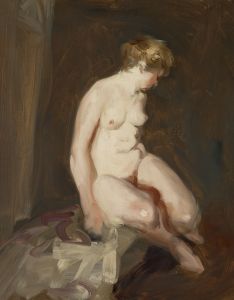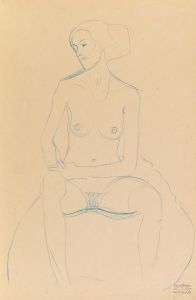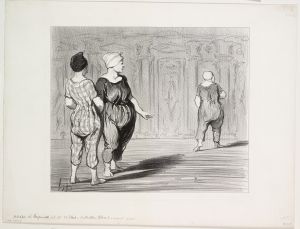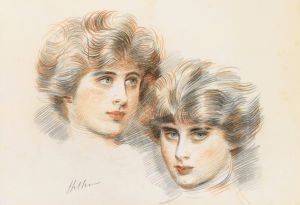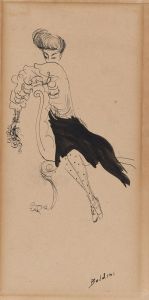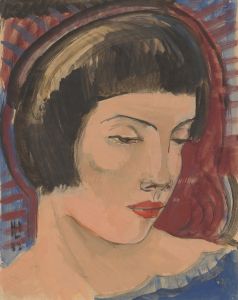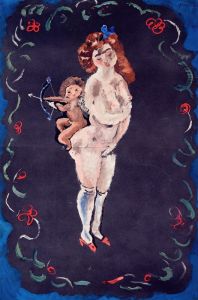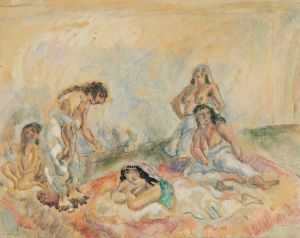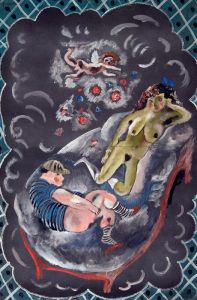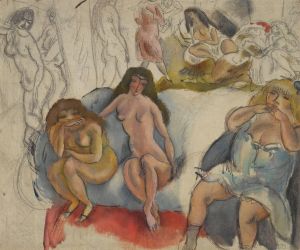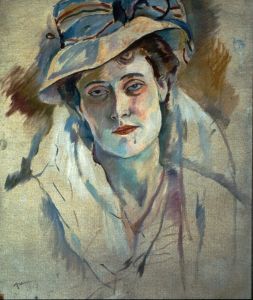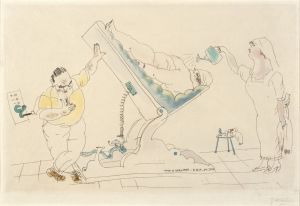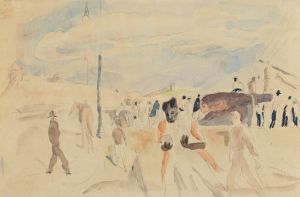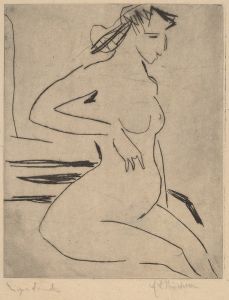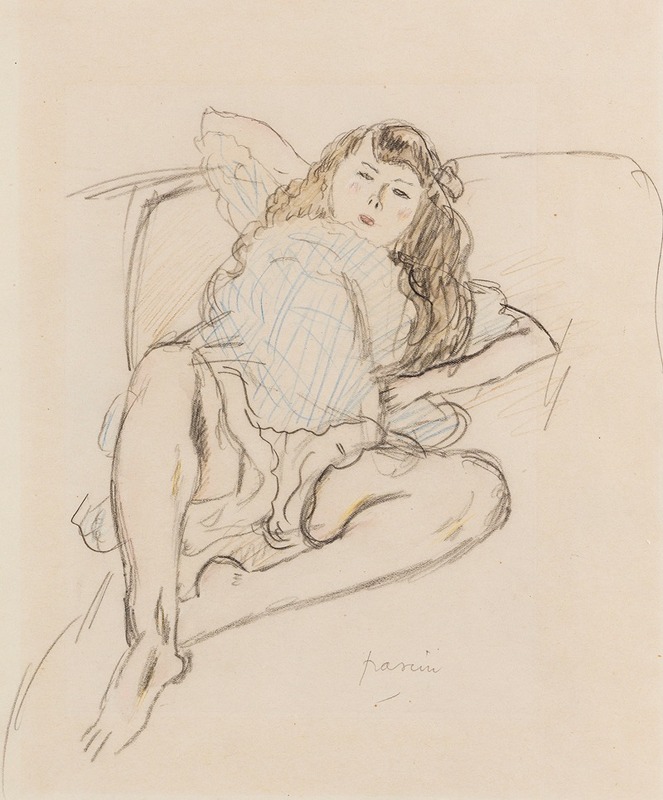
Liegende
A hand-painted replica of Jules Pascin’s masterpiece Liegende, meticulously crafted by professional artists to capture the true essence of the original. Each piece is created with museum-quality canvas and rare mineral pigments, carefully painted by experienced artists with delicate brushstrokes and rich, layered colors to perfectly recreate the texture of the original artwork. Unlike machine-printed reproductions, this hand-painted version brings the painting to life, infused with the artist’s emotions and skill in every stroke. Whether for personal collection or home decoration, it instantly elevates the artistic atmosphere of any space.
Jules Pascin, a Bulgarian-born artist who became a prominent figure in the early 20th-century art world, is best known for his evocative and intimate portrayals of human figures, particularly women. One of his works, Liegende (translated as "Reclining"), exemplifies his characteristic style, which blends elements of modernism with a sensitivity to the emotional and physical presence of his subjects.
Pascin created Liegende during a period when he was deeply engaged in exploring the human form, often depicting his subjects in relaxed, unguarded poses. The painting portrays a reclining female figure, rendered with soft, fluid lines and a muted color palette. The composition emphasizes the natural curves and contours of the body, reflecting Pascin's interest in capturing the vulnerability and sensuality of his models. His technique often involved delicate brushwork and a subtle interplay of light and shadow, lending his works an ethereal quality.
Jules Pascin, often referred to as the "Prince of Montparnasse," was a central figure in the bohemian art scene of Paris during the early 20th century. Born in Vidin, Bulgaria, in 1885, he later moved to Paris, where he became associated with the École de Paris, a group of international artists who worked in the French capital. Pascin's works were influenced by his travels and his exposure to various artistic movements, including Impressionism and Expressionism. Despite his success, Pascin struggled with personal demons, including depression and alcoholism, which ultimately led to his untimely death in 1930.
Liegende is representative of Pascin's broader oeuvre, which often focused on intimate, personal subjects rather than grand historical or allegorical themes. His works frequently depicted women in moments of solitude or introspection, capturing their emotional depth and individuality. While many of his paintings and drawings were celebrated for their technical skill and emotional resonance, they also reflected the complexities of his own life and experiences.
Today, Pascin's works, including Liegende, are held in high regard for their unique blend of technical mastery and emotional sensitivity. They can be found in major museums and private collections around the world, serving as a testament to his enduring legacy as a key figure in early 20th-century art. However, specific details about the provenance or current location of Liegende are not widely documented, and further research may be required to trace its history.





